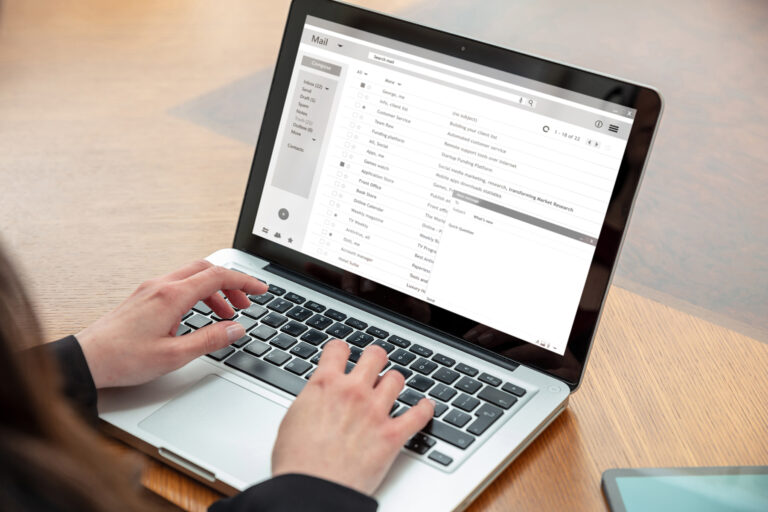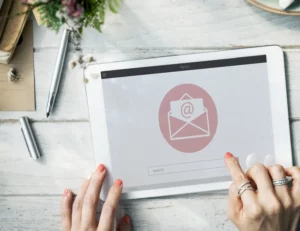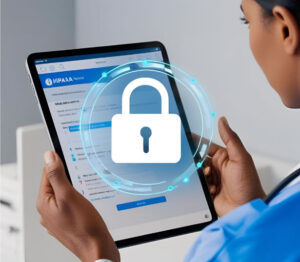In our increasingly digital world, email remains one of the most prevalent methods of communication—be it for personal, professional, or transactional purposes. With this convenience, however, comes a significant concern: the security and privacy of our email messages. Sensitive information, private conversations, and confidential data are often transmitted via email, making the protection of this information essential. Without robust security measures, that information can be vulnerable to interception, hacking, or unauthorized access.
This backdrop naturally raises the question: Are Gmail emails encrypted? Given that Gmail is one of the most widely used email services worldwide, understanding its security protocols is crucial for users who rely on it for everyday communication. Understanding how Gmail handles encryption can help users make informed decisions about their email privacy and take additional steps as needed to safeguard their messages.
This article examines the details of Gmail’s encryption practices, including the protections in place, the security measures employed during email transmission, and any potential limitations. We’ll examine whether Gmail provides end-to-end encryption, compare its security features to those of other providers, and offer practical tips for enhancing email privacy. Ultimately, understanding these aspects can empower users to better protect their digital correspondence in an age where privacy is continually under threat.
Gmail’s Encryption Basics
Email encryption refers to the process of converting readable message content into a coded format that can only be deciphered by intended recipients possessing the correct decryption keys. It serves as a vital safeguard against unauthorized interceptors, making sure that sensitive information remains private during transmission and storage. For users of email services like Gmail, encryption is an essential feature in maintaining confidentiality and securing communications from prying eyes.
Gmail primarily implements encryption through a protocol called Transport Layer Security (TLS). TLS is a widely adopted technology used to secure data as it travels across the internet, ensuring that messages are encrypted during transit between the sender and recipient. When you send an email with Gmail, your message is encrypted using TLS as it travels from your device to Google’s servers, and similarly, when Gmail dispatches the message to the recipient’s email server. This process diminishes the risk of interception by cybercriminals or third parties during transmission.
It’s essential to recognize that TLS encryption is a standard practice not only for Gmail but also across many reputable email providers. While it provides a robust layer of security during an email’s journey, it does not inherently protect the message once it reaches the recipient’s email server, especially if the server itself does not support encryption. Nonetheless, mastery of these basic encryption methods helps users understand the extent to which their emails are protected and points to where additional safeguards may be necessary.
End-to-End Encryption in Gmail
When asking, “Is Google email encrypted?” the answer depends on the level of encryption we consider. While Gmail encrypts emails during transit, it does not natively offer end-to-end encryption (E2EE) by default. In traditional E2EE, messages are encrypted on the sender’s device and only decrypted on the recipient’s device, meaning that even the email service provider cannot access the content of the message. This provides the highest possible level of privacy, preventing not only malicious actors but also the service provider itself from reading user emails.
Gmail’s default encryption, as previously discussed, employs TLS to secure emails during their journey across the internet. However, once the email arrives at Google’s servers, it is decrypted and stored in a readable format. This means Google technically has access to the content of your emails, which raises privacy concerns for some users. To implement actual end-to-end encryption in Gmail, users often resort to third-party tools or extensions. Examples include browser extensions like Mailvelope or services that integrate with Gmail to encrypt messages before they leave the user’s device and decrypt them only on the recipient’s device. These approaches require both the sender and receiver to install and configure compatible tools, but significantly enhance privacy by ensuring that Google cannot read the message contents.
While using third-party solutions adds an extra layer of security, they can sometimes be complex to set up and may not support all Gmail features seamlessly. Nonetheless, for users who prioritize maximum privacy—such as journalists, activists, or business professionals handling sensitive information—these options offer a compelling way to achieve end-to-end encryption when using Gmail. The trade-off often lies in convenience versus security, and users must choose accordingly based on their specific needs and technical comfort levels.
Comparing Gmail’s Encryption to Other Email Services
When evaluating Gmail’s encryption practices against those of other popular email providers, notable differences emerge. Gmail utilizes TLS encryption to safeguard emails during transit, a standard feature among major providers such as Yahoo Mail, Outlook, and ProtonMail. However, the key distinction lies in how each service handles storage and whether it adopts end-to-end encryption as a core feature.
For instance, ProtonMail, a service built around privacy, offers end-to-end encryption as a default, meaning emails are encrypted on the client device and remain encrypted until they reach the recipient’s device, who must also support ProtonMail’s encryption protocols. This setup ensures that even ProtonMail’s servers cannot access the content of the messages—an advantage over Gmail’s default operation. Conversely, services like Yahoo Mail and Outlook also rely on TLS for transit and store emails in an encrypted form on their servers, similar to Gmail, making them less private unless third-party encryption tools are used.
Gmail’s strengths include its widespread adoption, integrated ecosystem, and the implementation of TLS, which provides solid security during transit. Nevertheless, when it comes to end-to-end privacy, Gmail falls short compared to providers dedicated to privacy-centric features, such as ProtonMail or Tutanota. These services explicitly prioritize encryption and data confidentiality, making them better suited for users with strict privacy requirements. Therefore, while Gmail offers robust encryption during transmission, its overall privacy protections are limited by how it handles email storage and access, highlighting the importance of understanding the specific security features offered by each provider.
Enhancing Gmail Email Security
Although Gmail includes multiple security measures, users can take additional steps to further safeguard their email communications. First and foremost, adopting strong, unique passwords is fundamental. Using complex passwords that combine uppercase and lowercase letters, numbers, and symbols makes it harder for attackers to gain unauthorized access. Additionally, enabling two-factor authentication (2FA) provides an extra layer of security beyond just the password, making it significantly more difficult for malicious actors to compromise your account—even if your password is compromised.
Another practical tip involves using secure email extensions and tools designed to enhance Gmail’s native security features. For example, browser extensions like Mailvelope provide end-to-end encryption capabilities for Gmail, allowing users to encrypt messages before sending them and decrypt received messages securely. These extensions typically rely on open standards, such as OpenPGP, and give users more control over encryption keys, thereby enhancing privacy without sacrificing the convenience of Gmail’s platform.
Furthermore, being cautious about phishing attacks and suspicious links is vital. Gmail’s built-in spam filters and security warnings are helpful, but users should always verify sender information and avoid clicking on unverified links. Regularly updating your software, enabling account activity alerts, and turning off unnecessary app permissions also contribute to a safer email environment. By combining these best practices with Gmail’s existing security features, users can significantly enhance their email privacy and reduce the risk of data breaches or unauthorized access.
The Privacy Debate: Gmail’s Access to Emails
A primary concern in the realm of email privacy revolves around whether Google has access to the content of Gmail messages and how this data is used. Google’s privacy policy indicates that the company scans emails primarily to provide services such as spam filtering, malware detection, and personalized features. For most users, this means that while their emails are scanned in real-time for security and functionality purposes, Google does not directly target the content for advertising — at least not for users who opt out of personalized ads.
However, this access has broader implications for user trust and confidentiality. Users who handle sensitive or confidential information—such as legal, financial, or health-related data—may be concerned about the potential for their messages to be inspected or shared, intentionally or unintentionally. While Google’s policies aim to be transparent, the reality remains that they can technically access email content, which could raise privacy concerns for users with heightened confidentiality requirements. This ongoing debate underscores the importance of understanding the privacy policies and considering additional encryption solutions beyond what Gmail provides by default.
Many users feel reassured by Google’s privacy commitments, but the fact remains that Gmail is a cloud-based service operating under a business model that heavily revolves around data processing. Consequently, trust hinges on transparency and the security measures in place to prevent unauthorized access. Users should remain vigilant, educate themselves about data privacy practices, and consider supplementing Gmail’s inherent protections with additional encryption or security tools when needed for sensitive or private communication.
Future of Gmail Encryption and Email Privacy
Looking ahead, the landscape of email security and privacy is poised for significant advancements as both cyber threats and user expectations evolve. Future developments in Gmail’s encryption protocols are likely to include the broader adoption of end-to-end encryption as a standard practice, particularly as global privacy regulations become more stringent. Google may also integrate more advanced technologies, such as zero-knowledge encryption models, where even the service provider cannot read user data, further reducing privacy concerns.
Emerging technologies, such as secure multi-party computation and homomorphic encryption, could revolutionize email privacy by enabling data processing without exposing the actual content. Furthermore, artificial intelligence and machine learning might be employed to detect and prevent sophisticated cyber threats more effectively, enhancing overall security. These innovations could make Gmail and other email services not only more encrypted but also more innovative at predicting and defending against potential breaches while respecting user confidentiality.
Industry-wide, we could see increased competition to offer truly private email solutions that prioritize user control over data. As awareness around digital privacy continues to grow, providers will likely put greater emphasis on transparency, stronger encryption standards, and user-centric privacy features. Google’s ongoing investments in security and privacy infrastructure will be crucial in shaping the future landscape of secure digital communication.
Final Thoughts
In summary, Gmail’s current encryption practices primarily employ TLS encryption to secure emails during transit, but they do not provide built-in end-to-end encryption by default. While Google’s policies ensure that email data is protected from interception during transmission, the company retains access to email content stored on its servers, which can be a privacy concern for some users. This means that while Gmail is relatively secure during transit, the overall confidentiality of stored emails depends on trust in Google and the measures it implements.
For users seeking maximum privacy, taking proactive steps—such as employing third-party encryption tools and practicing good security hygiene—is essential. These additional measures can significantly enhance the confidentiality of sensitive email communications beyond what Gmail’s default setup offers. The combined approach of using Gmail’s native security features and supplementary protection methods provides a more comprehensive shield against potential threats.
We encourage all Gmail users to evaluate their email security practices critically and consider implementing additional safeguards, such as strong passwords, two-factor authentication, and encryption extensions. Staying informed about digital privacy and encryption techniques empowers users to take control of their online communications and data, ensuring they are protected. Resources such as the Electronic Frontier Foundation’s “Secure Webmail” guide or tutorials on PGP encryption can serve as valuable starting points. Ultimately, a proactive and informed approach to email security can help ensure that your private information remains protected in today’s evolving cyber landscape.






